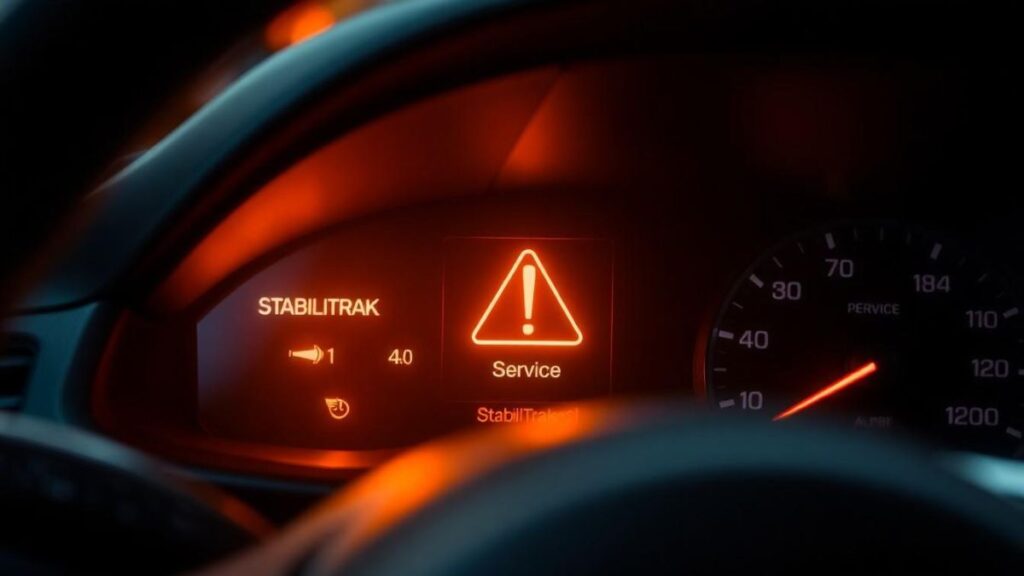Introduction to StabiliTrak and its Purpose
When you’re out on the road, safety is paramount. One of the key technologies ensuring a smooth and secure driving experience is StabiliTrak. This sophisticated system enhances vehicle stability, especially during challenging conditions like wet or slippery roads. But what happens when StabiliTrak itself encounters issues? Ignoring these problems could lead to unsafe driving situations and expensive repairs down the line.
In this blog post, we’ll explore common StabiliTrak issues that drivers may face. We will break down symptoms to watch for, possible causes behind those pesky warning lights, and effective solutions to get your vehicle back in top shape. Let’s dive into everything you need to know about keeping your ride safe with StabiliTrak!
Understanding How StabiliTrak Works
StabiliTrak is an advanced vehicle stability control system designed to enhance safety during dynamic driving conditions. It works by monitoring your car’s traction and steering dynamics in real-time.
When the system detects a loss of traction or directional control, it intervenes automatically. This could mean applying brakes to specific wheels or reducing engine power, all aimed at regaining stability.
Sensors track various parameters like wheel speed, steering angle, and yaw rate. By processing this data continuously, StabiliTrak can quickly determine how much assistance your vehicle needs.
The result? Improved handling on slippery roads or tight turns. The technology helps drivers maintain better control without needing constant adjustments.
Understanding StabiliTrak’s functionality allows you to appreciate its role in enhancing overall driving confidence and safety. With this knowledge, you’re more equipped to recognize when something isn’t quite right with the system.
Common Symptoms of StabiliTrak Issues
When StabiliTrak encounters issues, your vehicle will often signal trouble through specific symptoms. One of the most noticeable signs is the illumination of the StabiliTrak warning light on your dashboard. This alert indicates that something isn’t functioning correctly.
You might also notice a reduction in engine power or feel unusual vibrations while driving. These sensations can be unsettling and may affect how confidently you handle your car.
Another symptom includes unexpected braking behavior, where brakes engage without intention. This could lead to sudden stops or jerky movements that compromise safety.
Pay attention to any changes in traction control as well. If you find yourself losing grip during wet or slippery conditions despite having good tires, it’s time to investigate further.
These symptoms are key indicators that something is amiss with the StabiliTrak system, warranting immediate attention for both safety and performance reasons.
Possible Causes of StabiliTrak Problems
StabiliTrak issues can stem from various underlying factors. One common culprit is a malfunctioning wheel speed sensor. This sensor tracks the speed of each wheel and helps the system maintain balance during slippery conditions.
Another possible cause is problems with the steering angle sensor. If this sensor misreads, it may send incorrect data to StabiliTrak, leading to unexpected behavior while driving.
Electrical faults also play a significant role in StabiliTrak malfunctions. Wiring issues or corroded connectors can disrupt communication between components, causing warning lights on your dashboard.
Additionally, low brake fluid levels or worn-out brakes may trigger stability control alerts. Proper maintenance of these systems is vital for optimal performance.
Outdated software can lead to glitches in how StabiliTrak operates. Keeping your vehicle’s software current ensures all features work seamlessly together.
Diagnosing and Troubleshooting StabiliTrak Issues
Diagnosing StabiliTrak issues can seem daunting, but a systematic approach makes it manageable. Start by checking the dashboard for warning lights. If the StabiliTrak light is illuminated, it’s a clear sign that something isn’t right.
Next, listen for unusual sounds when driving. Grinding or clunking noises might indicate underlying problems with your vehicle’s traction control system.
A thorough inspection of wheel sensors is crucial. Dirt and debris can interfere with their functionality, leading to inaccurate readings.
Utilizing an OBD-II scanner will help pinpoint error codes related to StabiliTrak malfunctions. This diagnostic tool provides insights that are invaluable during troubleshooting.
Don’t overlook tire condition and pressure as well; uneven wear or improper inflation can trigger StabiliTrak warnings. Ensuring all components work in harmony is key to maintaining stability on the road.
Solutions for Fixing StabiliTrak Problems
Addressing StabiliTrak problems often requires a methodical approach. Start with a diagnostic scan using an OBD-II scanner. This tool can reveal error codes that point to specific issues.
If the problem lies within the wheel speed sensors, cleaning or replacing them may restore functionality. These components are crucial for monitoring traction and stability, so keeping them in top shape is essential.
Sometimes, simply resetting the system can clear temporary glitches. Disconnecting your vehicle’s battery for about 15 minutes can refresh the electronic systems.
For more complex issues related to software malfunctions, consider visiting a certified mechanic. They have access to specialized tools and updates that might be necessary for resolving deeper-rooted problems effectively.
Regular maintenance checks also prevent future complications. Keeping fluids topped up and ensuring proper tire pressure plays a vital role in maintaining StabiliTrak efficiency.
Prevention and Maintenance Tips for a Smooth Driving Experience
Regularly inspect your tires to ensure they are properly inflated and aligned. This simple step can significantly enhance your vehicle’s stability and handling.
Make it a habit to check the brake system frequently. Worn-out brakes can impact StabiliTrak performance, so replacing them when necessary is crucial.
Keep an eye on fluid levels as well. Brake fluid, power steering fluid, and transmission fluid all play essential roles in maintaining optimal vehicle function.
Don’t overlook software updates for your car’s onboard systems. Manufacturers often release updates that improve performance or fix known issues with features like StabiliTrak.
Follow the recommended maintenance schedule outlined in your owner’s manual. Regular servicing helps identify potential problems early before they escalate into costly repairs.
Conclusion
Understanding and addressing StabiliTrak issues is essential for any vehicle owner who values safety and performance. By recognizing the symptoms, identifying possible causes, and applying effective solutions, you can maintain your vehicle’s stability control system in optimal condition.
Regular maintenance checks are crucial to prevent unexpected problems. Staying informed about potential signs of trouble will help ensure a smoother driving experience. Don’t hesitate to consult professionals if you’re uncertain about diagnosing or resolving StabiliTrak issues. Prioritizing your vehicle’s health not only enhances its reliability but also contributes significantly to your overall safety on the road.





